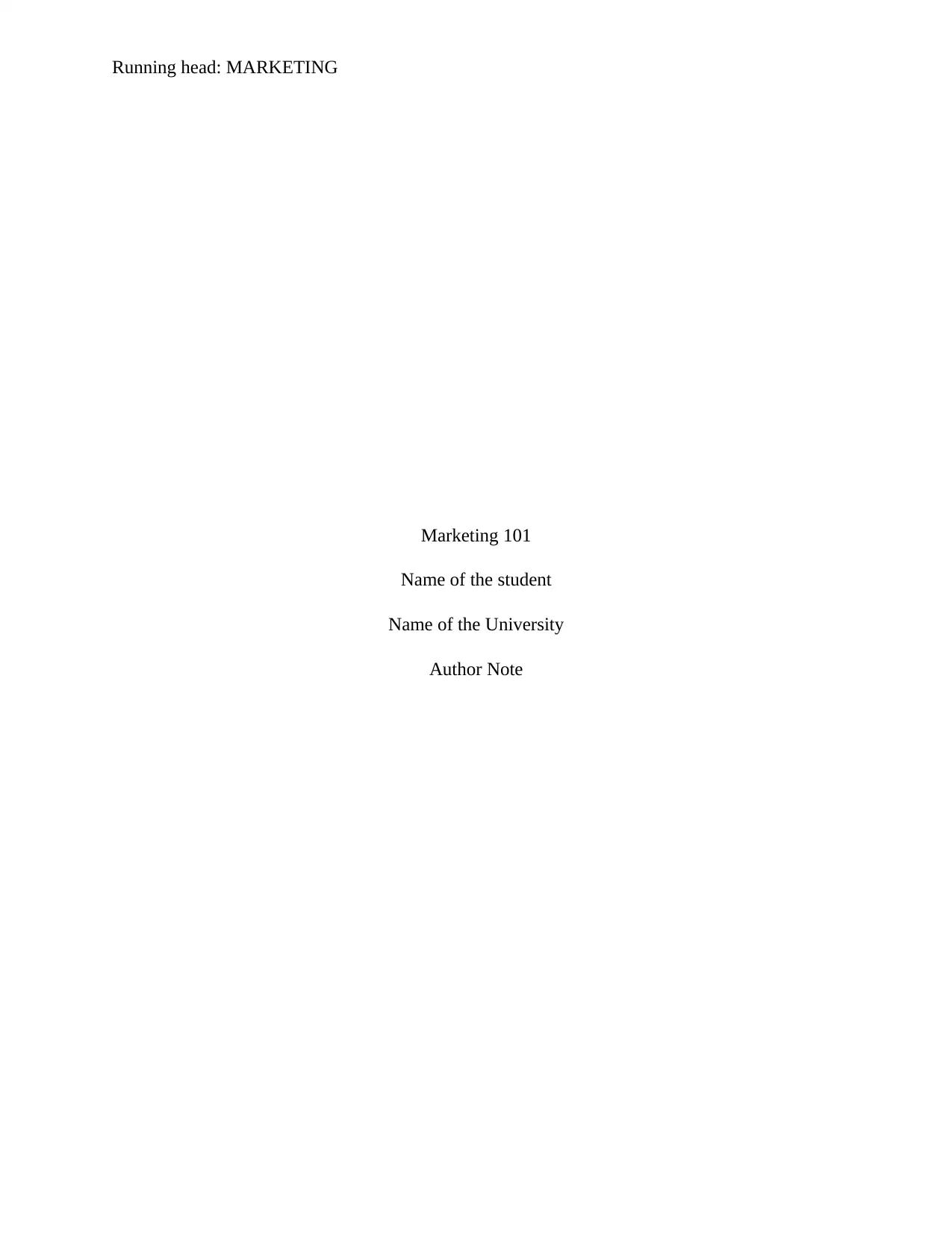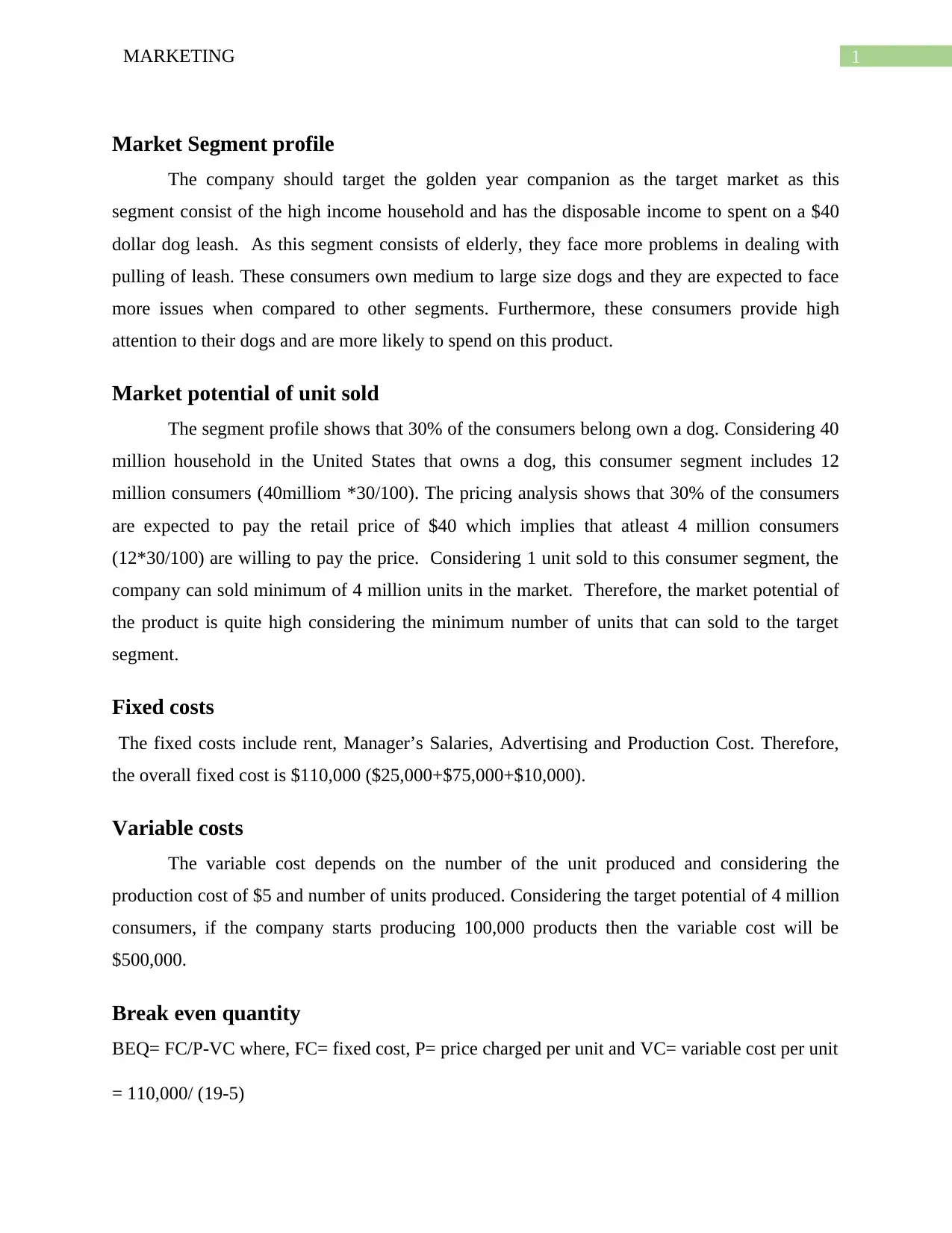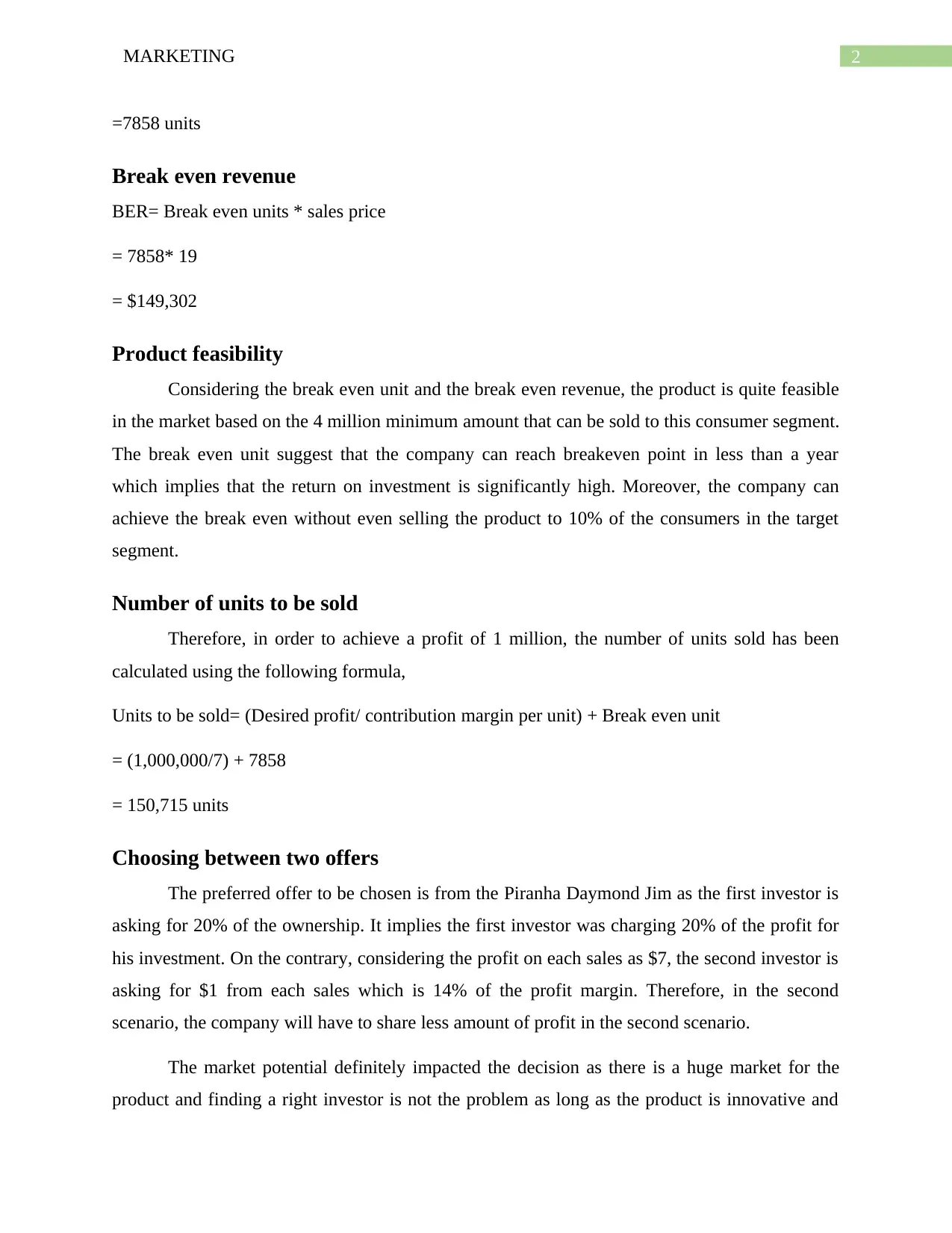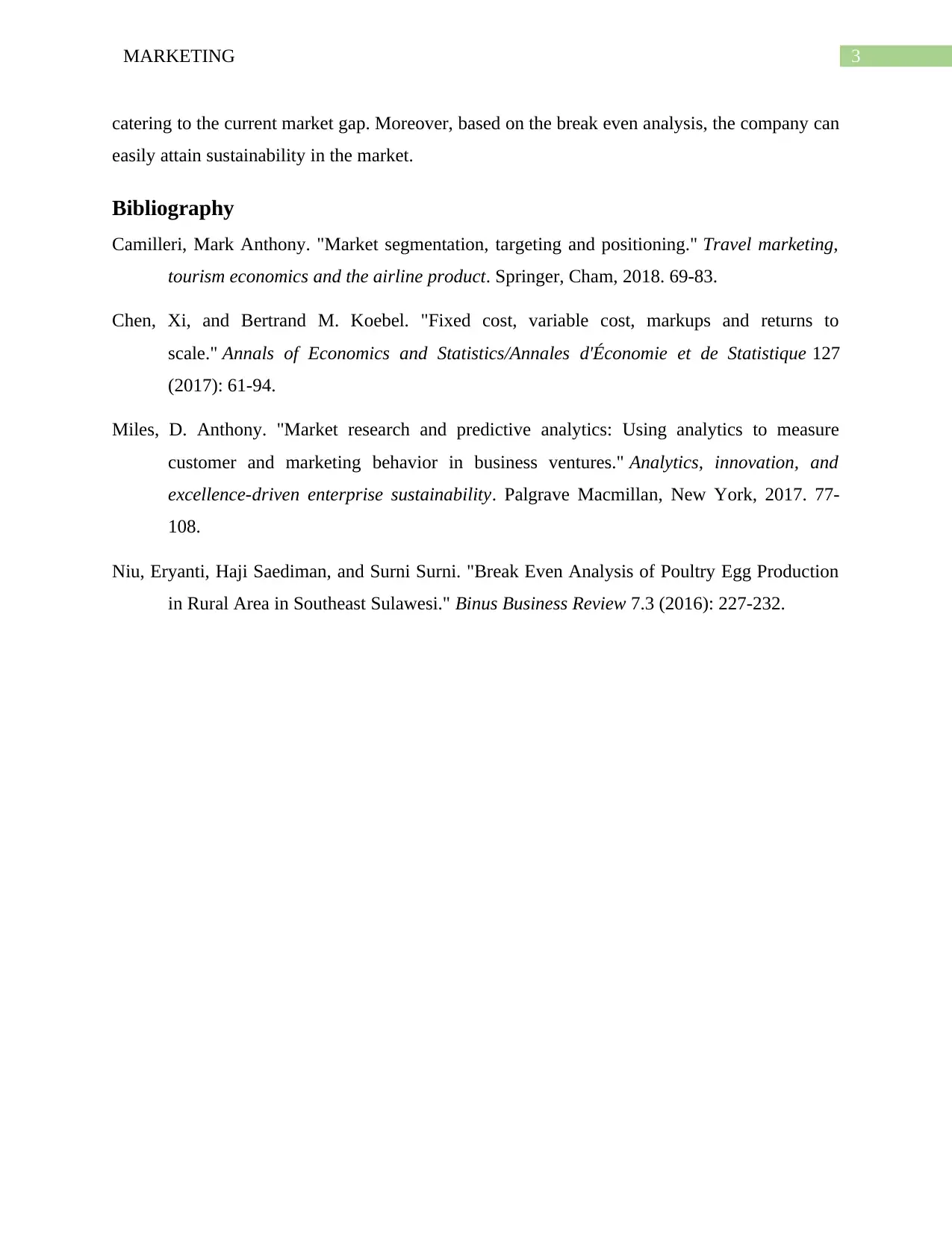Marketing Report: 2Chainz Dog Leash - Market Potential Analysis
VerifiedAdded on 2022/08/01
|4
|844
|25
Report
AI Summary
This marketing report analyzes the "2Chainz" dog leash, a product designed to prevent dogs from pulling during walks. The report identifies the "Golden Year Companion" segment as the primary target market due to their high disposable income and potential challenges with dog leash handling. It estimates the market potential, considering the number of dog-owning households in the United States and the willingness to pay for the product. The report also includes a detailed financial analysis, calculating fixed and variable costs, break-even quantity and revenue, and the number of units needed to achieve a profit of $1 million. Finally, it evaluates two investment offers, recommending the one that offers a more favorable profit-sharing arrangement, and highlights the importance of market potential in making the decision.
1 out of 4











![[object Object]](/_next/static/media/star-bottom.7253800d.svg)